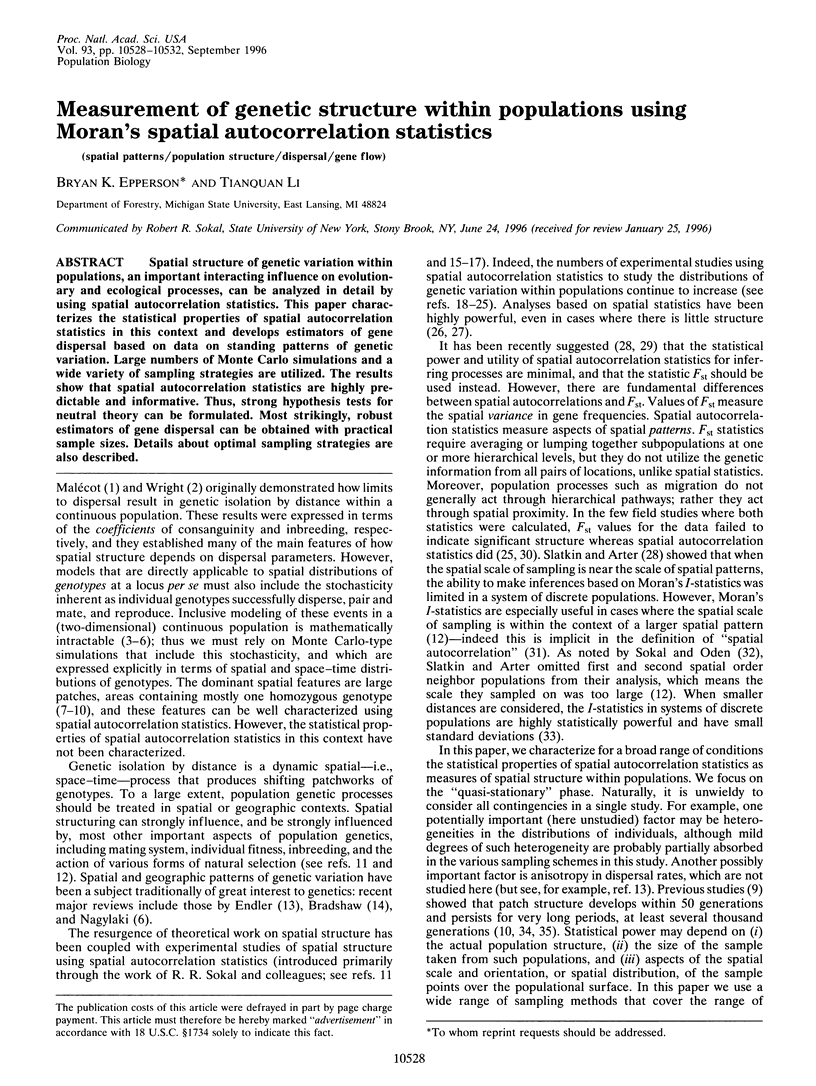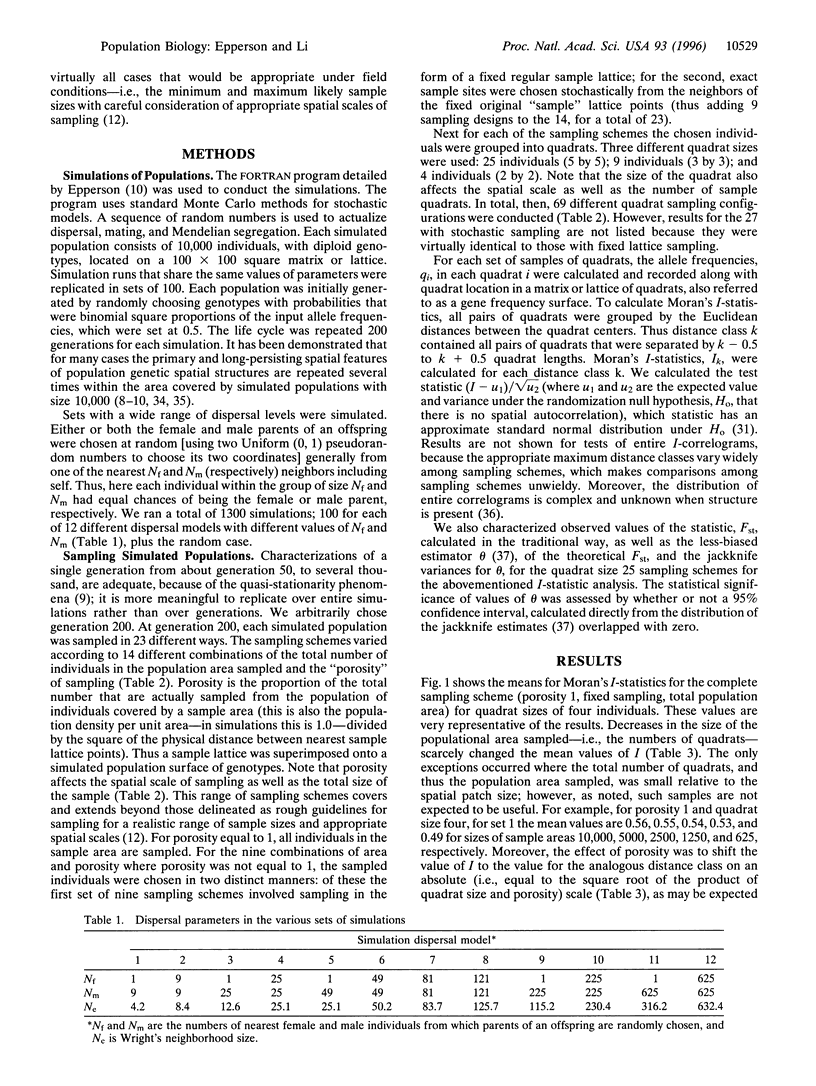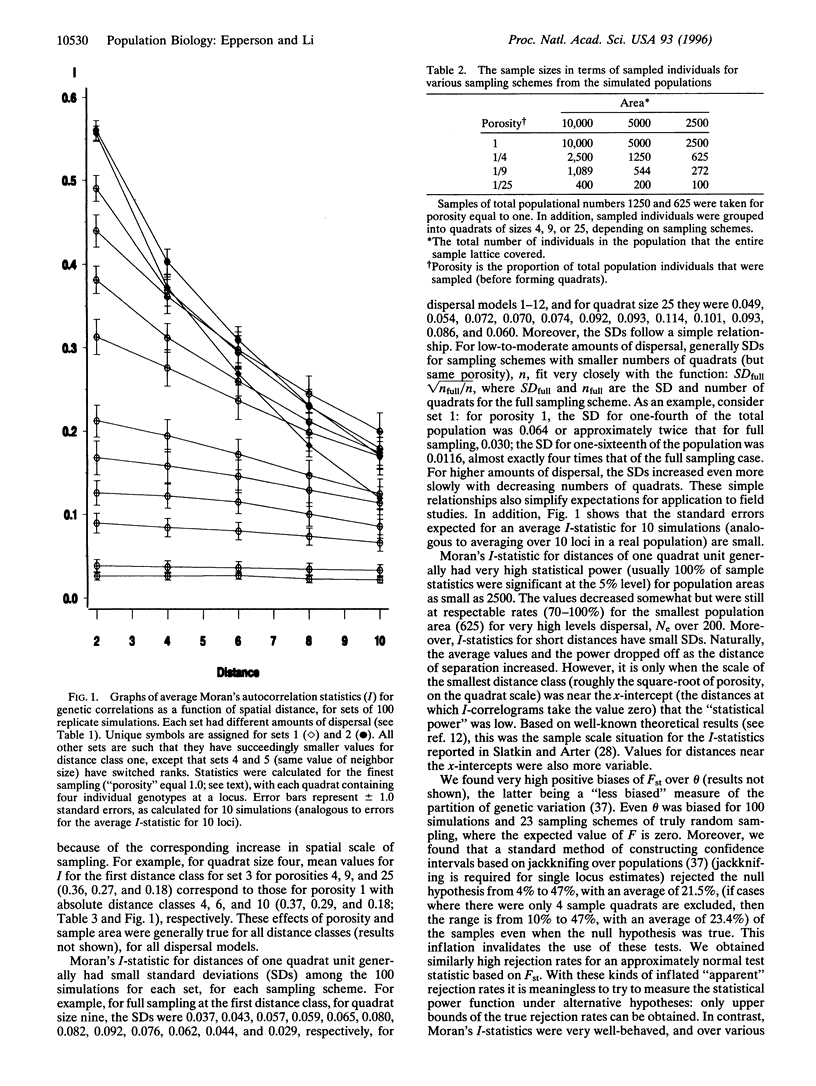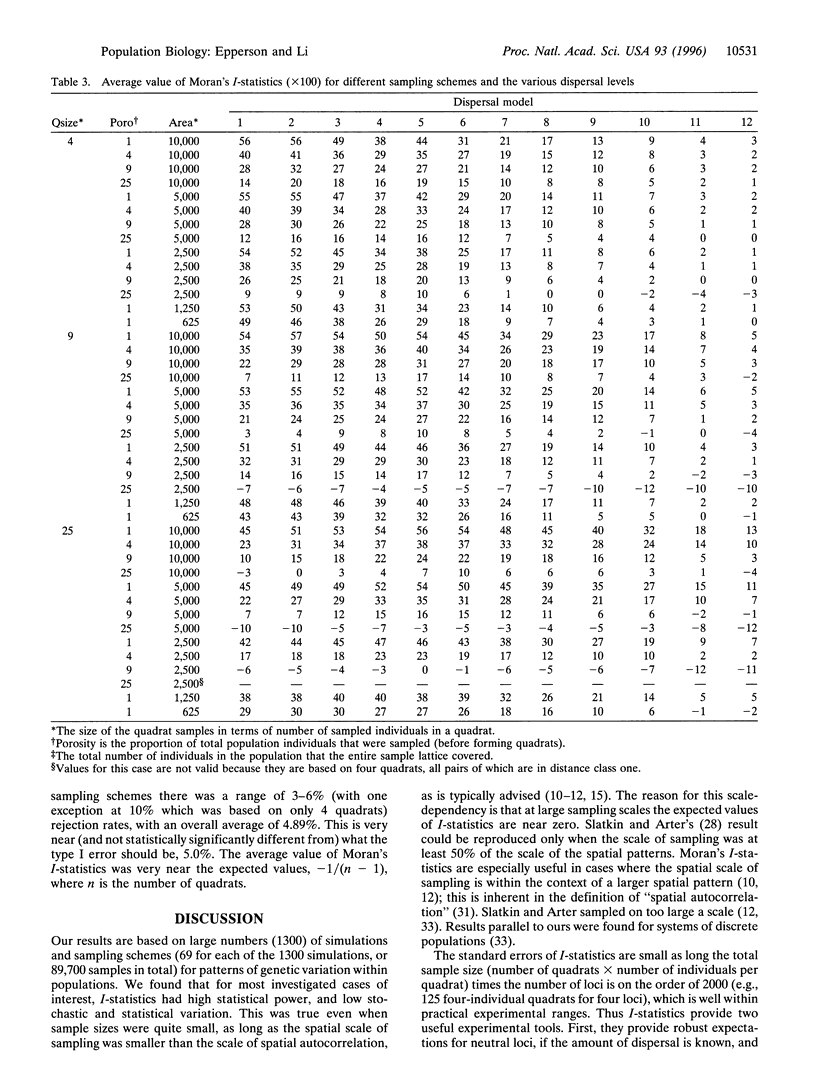Abstract
Spatial structure of genetic variation within populations, an important interacting influence on evolutionary and ecological processes, can be analyzed in detail by using spatial autocorrelation statistics. This paper characterizes the statistical properties of spatial autocorrelation statistics in this context and develops estimators of gene dispersal based on data on standing patterns of genetic variation. Large numbers of Monte Carlo simulations and a wide variety of sampling strategies are utilized. The results show that spatial autocorrelation statistics are highly predictable and informative. Thus, strong hypothesis tests for neutral theory can be formulated. Most strikingly, robust estimators of gene dispersal can be obtained with practical sample sizes. Details about optimal sampling strategies are also described.
Full text
PDF




Selected References
These references are in PubMed. This may not be the complete list of references from this article.
- Epperson B. K., Allard R. W. Spatial autocorrelation analysis of the distribution of genotypes within populations of lodgepole pine. Genetics. 1989 Feb;121(2):369–377. doi: 10.1093/genetics/121.2.369. [DOI] [PMC free article] [PubMed] [Google Scholar]
- Epperson B. K. Spatial autocorrelation of genotypes under directional selection. Genetics. 1990 Mar;124(3):757–771. doi: 10.1093/genetics/124.3.757. [DOI] [PMC free article] [PubMed] [Google Scholar]
- Epperson B. K. Spatial distributions of genotypes under isolation by distance. Genetics. 1995 Aug;140(4):1431–1440. doi: 10.1093/genetics/140.4.1431. [DOI] [PMC free article] [PubMed] [Google Scholar]
- Lewontin R. C., Krakauer J. Distribution of gene frequency as a test of the theory of the selective neutrality of polymorphisms. Genetics. 1973 May;74(1):175–195. doi: 10.1093/genetics/74.1.175. [DOI] [PMC free article] [PubMed] [Google Scholar]
- Sokal R. R. Genetic, geographic, and linguistic distances in Europe. Proc Natl Acad Sci U S A. 1988 Mar;85(5):1722–1726. doi: 10.1073/pnas.85.5.1722. [DOI] [PMC free article] [PubMed] [Google Scholar]
- Sokal R. R., Harding R. M., Oden N. L. Spatial patterns of human gene frequencies in Europe. Am J Phys Anthropol. 1989 Nov;80(3):267–294. doi: 10.1002/ajpa.1330800302. [DOI] [PubMed] [Google Scholar]
- Sokal R. R., Jacquez G. M., Wooten M. C. Spatial autocorrelation analysis of migration and selection. Genetics. 1989 Apr;121(4):845–855. doi: 10.1093/genetics/121.4.845. [DOI] [PMC free article] [PubMed] [Google Scholar]
- Sokal R. R., Wartenberg D. E. A Test of Spatial Autocorrelation Analysis Using an Isolation-by-Distance Model. Genetics. 1983 Sep;105(1):219–237. doi: 10.1093/genetics/105.1.219. [DOI] [PMC free article] [PubMed] [Google Scholar]
- Turner M. E., Stephens J. C., Anderson W. W. Homozygosity and patch structure in plant populations as a result of nearest-neighbor pollination. Proc Natl Acad Sci U S A. 1982 Jan;79(1):203–207. doi: 10.1073/pnas.79.1.203. [DOI] [PMC free article] [PubMed] [Google Scholar]
- Wright S. Isolation by Distance. Genetics. 1943 Mar;28(2):114–138. doi: 10.1093/genetics/28.2.114. [DOI] [PMC free article] [PubMed] [Google Scholar]


